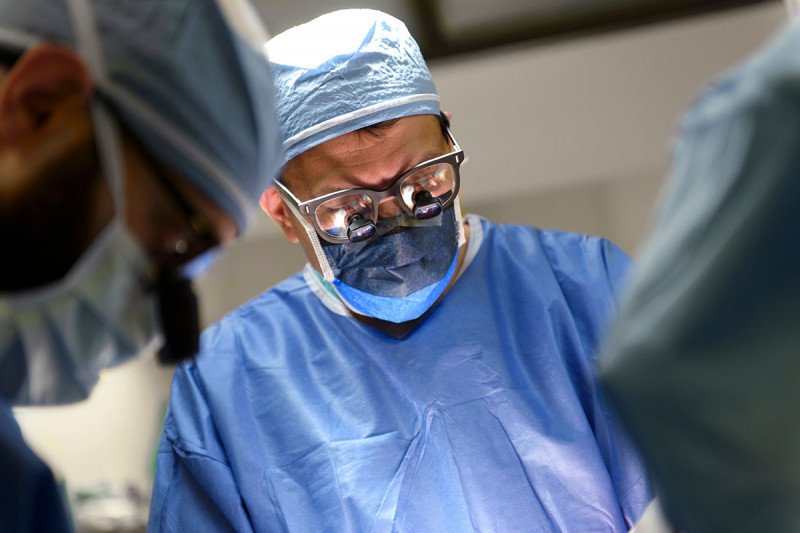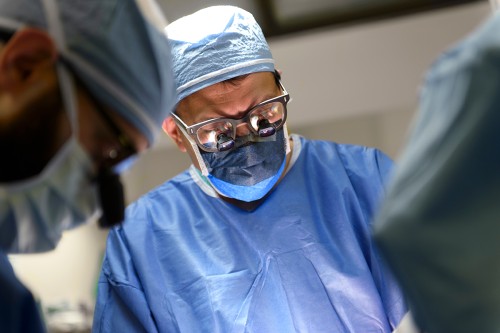
Plastic and reconstructive surgeon Babak Mehrara says women who are dissatisfied with their reconstructive breast surgery can usually have adjustments made through minor follow-up procedures.
Women facing breast cancer surgery often grapple with a tough decision — whether to have breast reconstruction to restore the shape and appearance of their breasts. There are many options for the extent of the reconstruction and the type. For example, women can select implants or use their body’s own tissues, which is called flap surgery.
Studies have shown that breast reconstruction with either technique is associated with improvements in quality of life. But a recent analysis found that only about 40 percent of women who received a mastectomy in the United States chose breast reconstruction.
Women may be foregoing reconstructive surgery because of misconceptions about the procedure, says Babak Mehrara, Chief of MSK’s Plastic and Reconstructive Surgical Service. We asked Dr. Mehrara to address some of the most common misunderstandings.
Myth: Women are focused on having their cancer controlled and don’t care about various breast reconstruction options.
“There are a variety of reconstruction procedures now, but people with breast cancer may not be aware of all of their choices,” Dr. Mehrara says. “A 2008 study showed that the single greatest predictor of whether a woman had breast reconstruction was a mention in her medical record that the option was discussed. This carried more weight than other factors, such as age, ethnicity, and socioeconomic background.
“Women who understand the risks and benefits are more likely to opt for reconstruction. It may not be right for everyone, but everyone deserves to know what’s available to make a fully informed decision.”
Myth: Women who are unsatisfied with their initial reconstruction have no options to make it better.
“Some women who have reconstruction may not be completely satisfied with the results of the surgery. This can cause feelings of anxiety or depression. They may think that there is no way to address these issues and do not bring them up with their surgeon,” he adds.
“For these reasons, MSK has pioneered the development and use of patient-reported outcome tools. They help us understand and quantify a woman’s satisfaction before, during, and after her surgery. These tools address not only physical appearance but also sexual and psychosocial issues and how they are recovering. We are then able to recommend additional surgery or counseling if needed.
“It’s important to emphasize that additional operations to improve symmetry and produce more pleasing results are routinely performed. We call it revision surgery,” Dr. Mehrara says. “This does not mean something went wrong in the first operation. Rather, the goal is to address particular issues that may be troublesome to patients.
“For example, a breast reconstruction with an implant often leaves a dent in the upper part of the breast that is difficult to hide with clothing. Reconstructive surgeons can fix this by grafting fat from elsewhere in the body and injecting it into the hollow spot. This can’t be done during the initial operation — the temporary reconstruction must heal to form a pocket that can receive the fat.
“Other times, women may want surgery on the unaffected breast for purposes of symmetry. These procedures are generally minor and are typically done in an outpatient setting. Our team of plastic and reconstructive surgeons recently published results showing that people who have revision procedures are happier with the outcome.”
Myth: Breast reconstruction may delay or interfere with radiation and chemotherapy treatments that could prevent the cancer from coming back.
“Women are understandably anxious about starting their treatment once the diagnosis of breast cancer is made,” Dr. Mehrara notes. “Some people worry that having reconstruction may delay their treatment with chemotherapy or radiation. They’re concerned that the wait may increase the possibility that the tumor cells may spread.
“However, our research has shown that in properly counseled patients, reconstruction very rarely results in a delay of chemotherapy or radiation. In addition, reconstruction with implants or tissues does not interfere with chemotherapy or radiation treatments. We have also shown that those who undergo reconstruction do not have an increased risk of the cancer coming back or spreading to other sites in the body.”
Myth: Reconstruction makes it harder to detect cancer if it returns.
As Dr. Mehrara says, “This idea comes out of concerns that an implant or flap might obscure a small cancer below it, where it would not be detected by a mammogram. But studies have shown that reconstruction does not delay the diagnosis of a cancer’s return, or recurrence.
“If cancer does come back, it usually happens in the skin or chest wall. This can be detected by a physical examination or radiologic tests if necessary. Moreover, we have found that reconstruction does not change the treatments available to people who have a recurrence. In fact, in most cases, we simply remove these small areas of recurrent cancer growth and the reconstruction stays in place.
“The most important point to remember is that reconstruction needs to be individualized for each person,” he concludes. “There are many factors to consider, and women need to have a complete discussion with their surgeons to know what is right for them.”






